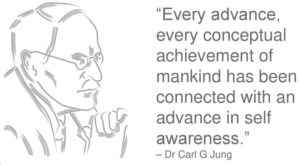Adapting and Connecting, Inside and Out
As Shrek once said, ‘Ogres have layers!’ Exasperated, Shrek was trying to convey to Donkey how complicated it could be and feel as his behavior didn’t reflect what was going on inside of him. Ogres and humans might not have too much in common, but we certainly can relate to Shrek’s ordeal when it comes to our layers.
Carl Jung clarified his concept of the conscious and subconscious minds in his psychoanalytical research. He pioneered explanations of what happens in our ‘light’ sides, or the things in our brains that we can think about and analyze, and what happens in the ‘darkness’ of our subconscious minds. These two layers revealed more about humanity’s layers than was previously known and helped created the field of personality studies as we know them today.
Balancing behavior
The idea of the four color personalities is used to help us figure out where our personal strengths lie. This idea of ourselves comes from a combination of our unconscious and conscious thoughts about who we are and what we do with that information. Other people can’t always know what’s going on in our heads, which is why our external behavior is such a huge marker to others to display information about our personalities. When we act contradictory to our internal selves, discontent and confusion can result.
Our adaptable outer shell of behavior is just the outermost layer of what makes us who we are. Underneath is a complicated, wonderful bunch of layers that encompass our intellectual, emotional, and spiritual selves. Each of these layers works in different ways to instruct and inform our outermost behaviors, thoughts, and opinions.
When working with people of different personality types, our various layers can sometimes clash. Adapting to cooperate and work with people with every personality strength can be a challenge, which is where some outer behavior change can positively alter a situation.
Adapting and connecting
Adapting doesn’t mean conforming; rather, adapting to another person’s personality type can simply mean shifting your focus to them in a way that enhances communication and connection. For instance, when dealing with someone who is a Fiery Red personality, talking to them directly and energetically will capture and keep their attention. Interacting with an Earth Green energy can mean slowing down and paying attention to the nuance of a conversation while someone with a Sunshine Yellow personality will appreciate openness and optimism. Paying attention to detail and giving deeper thought to a project or topic can make a Cool Blue energy relax into an engaging conversation.
By paying attention to the personality traits of those around us, we can begin to shape our external behaviors to adapt better and communicate. This, in turn, transforms our inner layers, right down to our sense of self!
Jung opened up an entirely new world with his discoveries, and discoveries into the psychology of personality and the self are still being made today. Insights Discovery is based squarely on Jung’s theories, and as such is an invaluable tool in helping people understand themselves and others. Schedule me, Scott Schwefel, as your keynote speaker, and I will come to your group and address the differences in personalities in a truthful, fun, and easy-to-understand way. Follow me on Facebook, LinkedIn, and Twitter to share my blogs with the color energies you work with!






